Lower Zambezi National Park, South Luangwa National Park & Mauritius
Welcome to our 7th African Safari Trip Report! This time around we wanted to focus on Zambia – specifically South Luangwa National Park, Lower Zambezi National Park and Kafue National Park. Due to logistical reasons, we had to cancel our plan to visit the Wilderness Shumba Camp in Kafue. There’s always a next time!
Zambian parks have so much to offer. Being picky on destinations and accommodation, we initiated the planning a little over a year prior to this trip. Everything fell into place and off we went on this trip as excited as ever to return to Africa.
As we’ve mentioned in previous posts, planning well in advance is a key for us. It allows us to fully embrace the essence of each journey, carefully balancing the timing of low and peak seasons, understanding the current state of the natural environment, and combining luxury with authentic wildlife experiences.
Arrival into Jeki airstrip
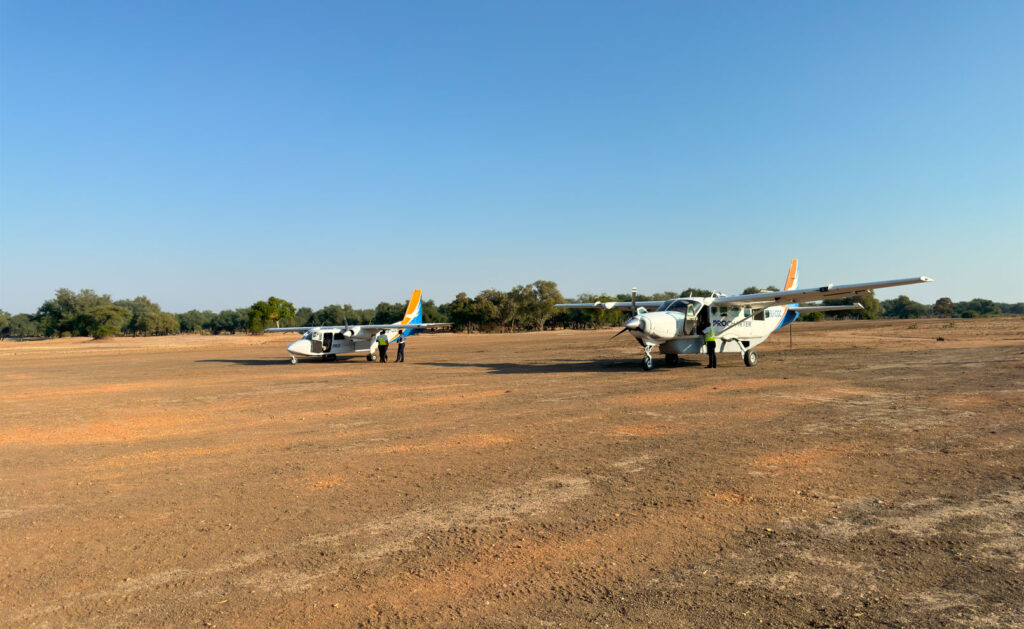
Our journey began as it always does for our Southern Africa trips—flying into Johannesburg and spending the night at the IHG hotel just across from the Arrivals terminal. The next morning, we checked in with Proflight for our flight to Lusaka. Proflight is a good airline with decent service although we feel Airlink is better. Arrival into Lusaka and immigration clearance was very straightforward – far better than arriving directly in Lusaka. Although not required, we had transfer assistance included to help get us to the domestic terminal for our onward bush flight connection to Jeki airstrip in the Lower Zambezi National Park. Turned out our bush flight was one of the older Proflight planes making the trip an adventure – a fun adventure!
The arrival included a circle over the Zambezi River where we saw pods of hippos & Zimbabwe across the river.
Old Mondoro Camp
Considering Jeki airstrip as the divider between the eastern and western sectors of the park, this camp is located on the eastern side of the park along the banks of the Zambezi River. The drive to the camp takes about 45 minutes, though it may take a bit longer if you happen to spot wildlife along the way. The eastern part of the park is characterized by a mix of wooded areas, dry riverbeds, open grasslands, and riverfront. The camp itself sits at the edge of a partially open area, offering panoramic views of both the camp and the surrounding landscape as you approach.
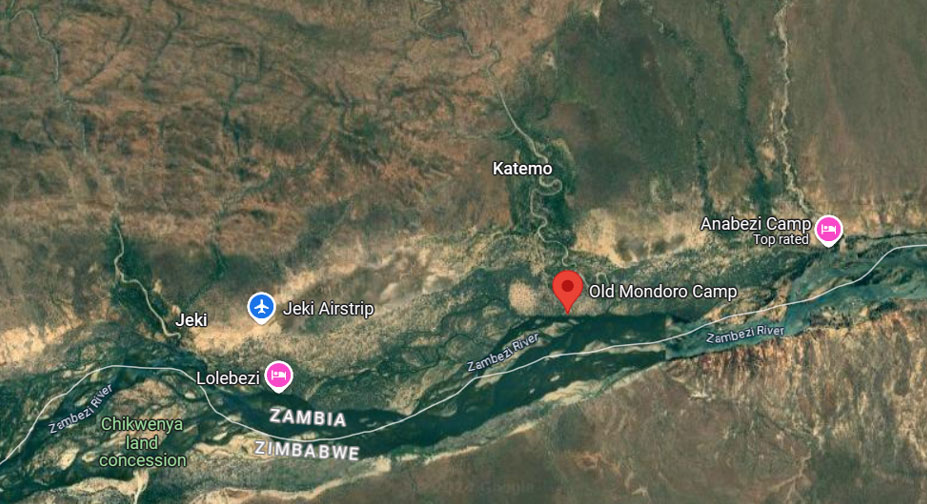
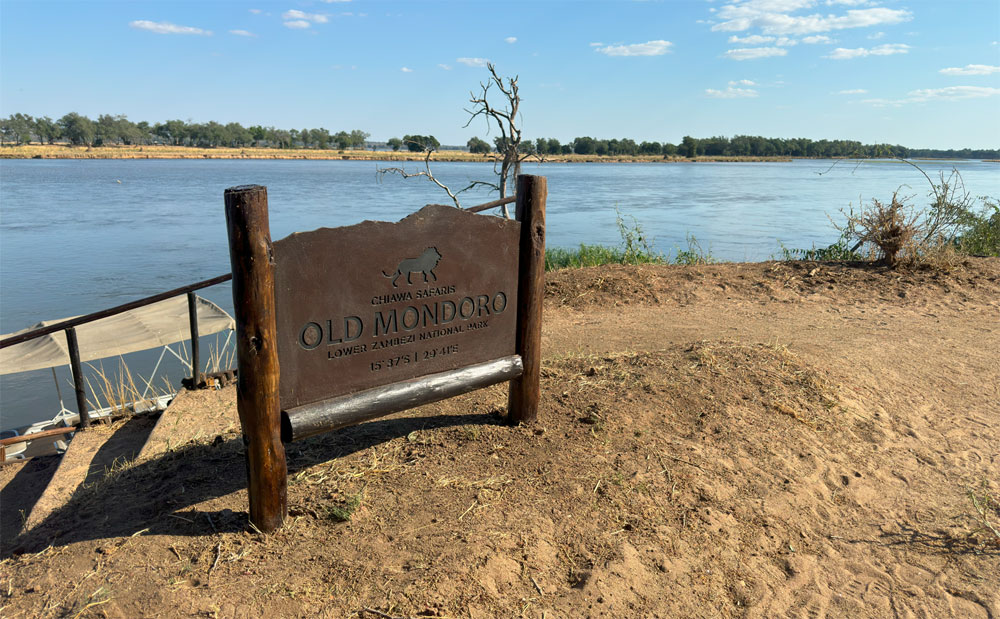
The camp is quite rustic and comprises 6 suites – all to the right of the common area with all units having bird names. We were in suite #3 – perhaps the more ideal one as it is at the corner where the channel meets the river. The suites are airy and have an open feel and layout to them. Each suite has an open verandah and an outdoor shower. We saw elephants walk by every afternoon! More on this in a moment. There is no AC given the open plan (important to note if planning to visit during the hotter months). The common area has all the comforts one would expect from a rustic camp. The camp doesn’t feature a pool; one is not needed though. The backdrop of the Zambezi River is stunning.
The meals were exceptional, and we were especially impressed by how well our vegetarian requests were accommodated. There was a great variety of options, all of which were fresh, flavorful, and delicious. The staff was gracious and attentive, as was the management team, with someone always nearby to ensure our needs were met. These thoughtful details really make the camp feel warm and welcoming.
Our game drives were enjoyable, with hits and misses sprinkled in. More hits than misses though we should say. We had many opportunities to explore the vastness of the eastern sector, spend time with the lion prides and a wild dog pack in the area. In fact, we had a great sighting of the wild dogs killing an impala. In addition, we spotted a variety of other animals from herbivores to Ellies and leopards. We were fortunate to be able to spend time with a leopard taking its kill up a tree after sunset and coming back down to mark its territory. Being the only vehicle at the sighting made it even more precious. We had multiple sightings of elusive nocturnal animals such as the white-tailed mongoose, African civet, genet, aardvarks and porcupine. Lastly, the camp offers canoe rides allowing visitors to get up close and personal to hippos in the water (we were fortunate to get a sighting of an elephant on its hind legs reaching for the succulent leaves – what Mana Pools across the river is known for) and sunset boat cruises along the Zambezi River with opportunities to spot alligators, hippos and other animals. We managed to see Tembo Plains (a Great Plains property in the Sapi Reserve) across the river. Very consistent with other Great Plains properties we have visited.
- old-mondoro-camp-game-sighting-1
- old-mondoro-camp-game-sighting-2
- old-mondoro-camp-game-sighting-3
- old-mondoro-camp-game-sighting-4
- old-mondoro-camp-game-sighting-5
- old-mondoro-camp-game-sighting-6
- old-mondoro-camp-game-sighting-7
- old-mondoro-camp-game-sighting-8
- old-mondoro-camp-game-sighting-9
- old-mondoro-camp-game-sighting-10
- old-mondoro-camp-game-sighting-11
- old-mondoro-camp-game-sighting-12
- old-mondoro-camp-game-sighting-13
- old-mondoro-camp-game-sighting-14
- old-mondoro-camp-game-sighting-15
- old-mondoro-camp-game-sighting-16
Overall, we thoroughly enjoyed our stay at this camp and would highly recommend it among the options in the eastern sector of the park. The camp is simple and rustic, yet it blends beautifully with its surroundings. Its location is perfect, and the food was outstanding. The staff was friendly and engaging, and we even had elephants passing through camp, which added a special touch. The game drives were excellent as well. In our opinion, the next best option is Anabezi.
It’s worth noting that this camp does not offer Wi-Fi. Unfortunately, due to time constraints, we couldn’t visit the western sector or stay at Chiawa Camp, Old Mondoro’s sister property, but it’s definitely on our list for next time. From what we’ve read and heard, Chiawa Camp seems like a must-visit.
Chindeni Bush Camp
Our next stop takes us to South Luangwa National Park (SLNP). The direct flight from Jeki to Mfuwe runs a few days a week (not all 7 days). If you time your transfer correctly, you can get the direct flight vs having to connect via Lusaka which takes much longer and takes away time from getting in the afternoon game drive at South Luangwa. It’s a good idea to ask your travel agent the right questions about the transfer logistics to help minimize travel time.
This camp is operated by Bushcamp Company. All their camps in SLNP are located in the extreme southern end of the park. Given its location, very few, if any, other camps or lodges operate in this area, making it feel like a private reserve exclusively accessed by Bushcamp Company camps.
Upon arrival into Mfuwe airport, check-in takes place at Mfuwe Lodge, where you receive a brief introduction, followed by lunch and information about Chindeni, including details on how to request assistance (you can ask camp management to contact Mfuwe Lodge). It’s also worth noting that the camp does not offer Wi-Fi. Afterward, you’ll begin your game drive transfer to Chindeni, which takes at least 3 hours, with the possibility of a longer journey if you make stops to view wildlife along the way.
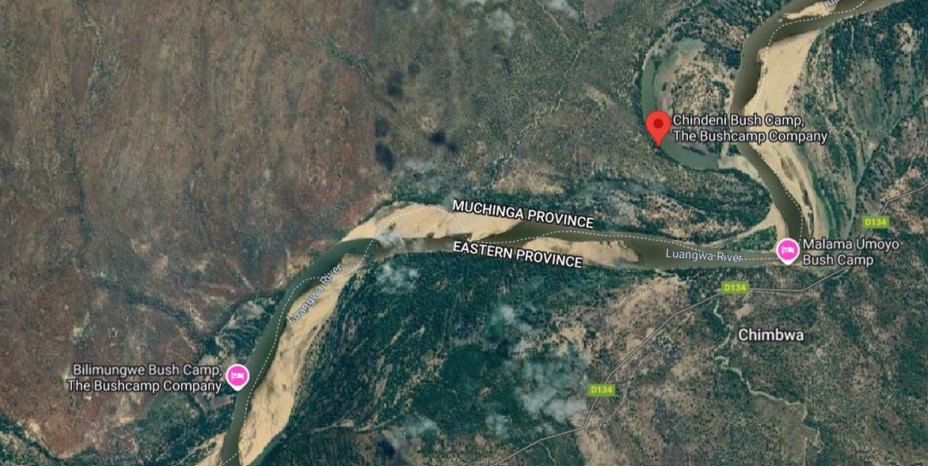
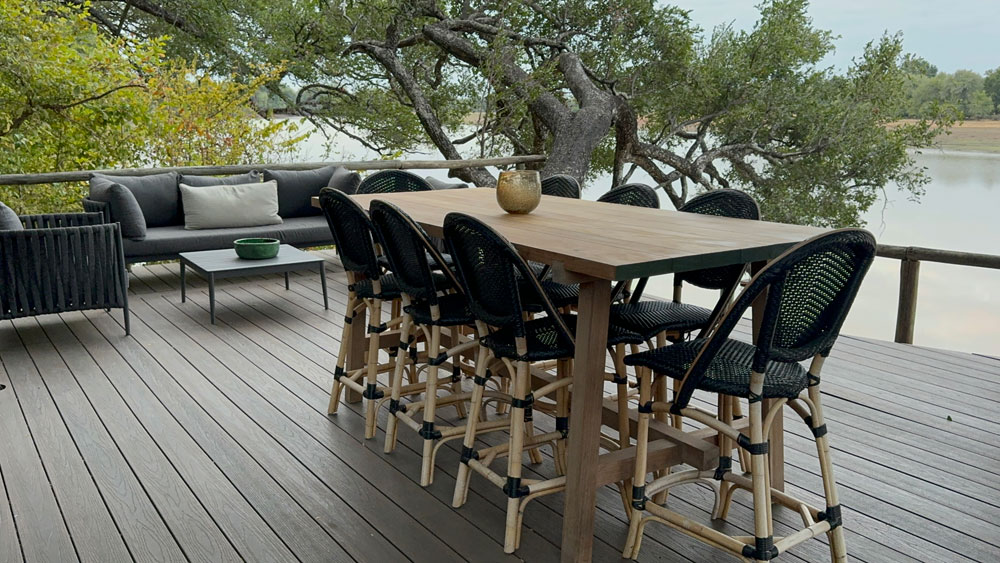
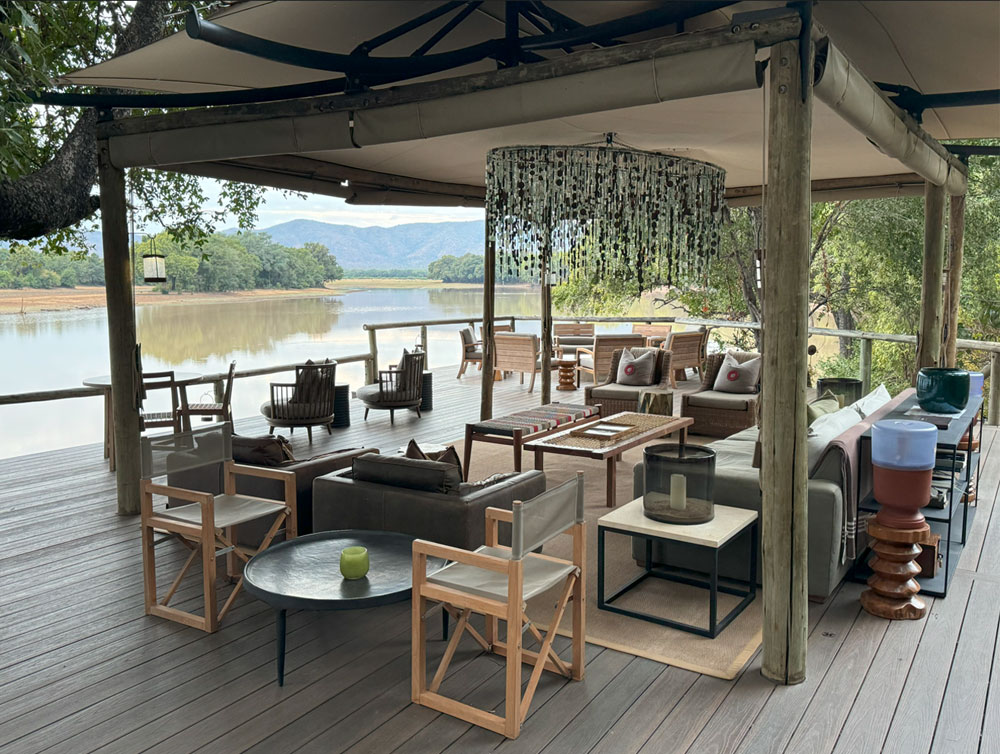
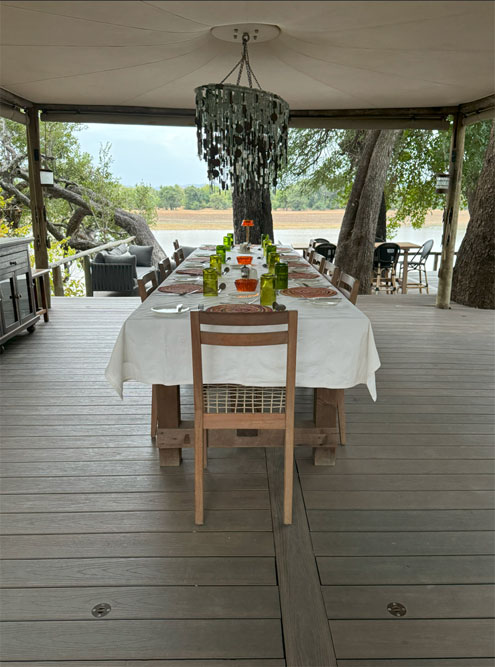
We chose Chindeni over the other Bushcamp Company camps in the area for its prime location and unique camp layout. The camp consists of just four tented suites, offering an intimate experience. Despite its remote location, the camp is stunning, with incredible suites and a breathtaking common area deck. From the deck, we spotted a pied kingfisher hovering over the channel before diving and catching a small fish—an unforgettable moment! The food was outstanding, and the camp took excellent care of our vegetarian preferences. Two standout meals were the stir fry evening and the “make your own pizza in the bush” experience, both of which we won’t soon forget. The staff and management went above and beyond to ensure our comfort, earning high marks from us for their exceptional service.
On the downside, the game drives were somewhat inconsistent. The quality of the drives likely had to do with the guide pairing, and this is an area where the camp could improve—especially for guests seeking a more adventurous experience or those on their second or third safari. We mentioned this to the camp management and at Mfuwe Lodge during departure, and we hope to see improvements in this area. That said, we did manage to spot the resident lions and a wild dog pack, though the rest of the game viewing was limited.
One highlight, however, was the bushwalk along the Luangwa River. It was an incredible experience, especially seeing the nests of the carmine bee-eaters along the riverbanks. Watching the first few bee-eaters arriving was a magical moment, adding to the charm of the walk.
- chindeni-bush-camp-game-sighting-1
- chindeni-bush-camp-game-sighting-2
- chindeni-bush-camp-game-sighting-3
- chindeni-bush-camp-game-sighting-4
- chindeni-bush-camp-game-sighting-5
- chindeni-bush-camp-game-sighting-6
- chindeni-bush-camp-game-sighting-7
- chindeni-bush-camp-game-sighting-8
- chindeni-bush-camp-game-sighting-9
- chindeni-bush-camp-game-sighting-10
Overall, Chindeni Bush Camp is a beautiful and well-located camp that offers an unforgettable experience. The staff is exceptional, and the food is outstanding, especially given the camp’s remote location. If improvements are made to the guiding, there would be no negative aspects, making this camp a must-visit destination. However, it’s important to note that the area is prone to flooding during the rainy season and is known for its tsetse flies. To avoid discomfort, it’s advisable to wear light-colored clothing and take the necessary precautions to protect yourself.
Puku Ridge Camp
Our final stop was Puku Ridge, which we reached via a Chindeni car transfer that took about 45 minutes. We had been deciding between a few of the Time & Tide properties, but ultimately chose Puku Ridge because it’s considered one of the most luxurious camps in South Luangwa National Park. It also pairs well with its sister camp, Old Mondoro, and we had already experienced a riverfront stay at Chindeni.
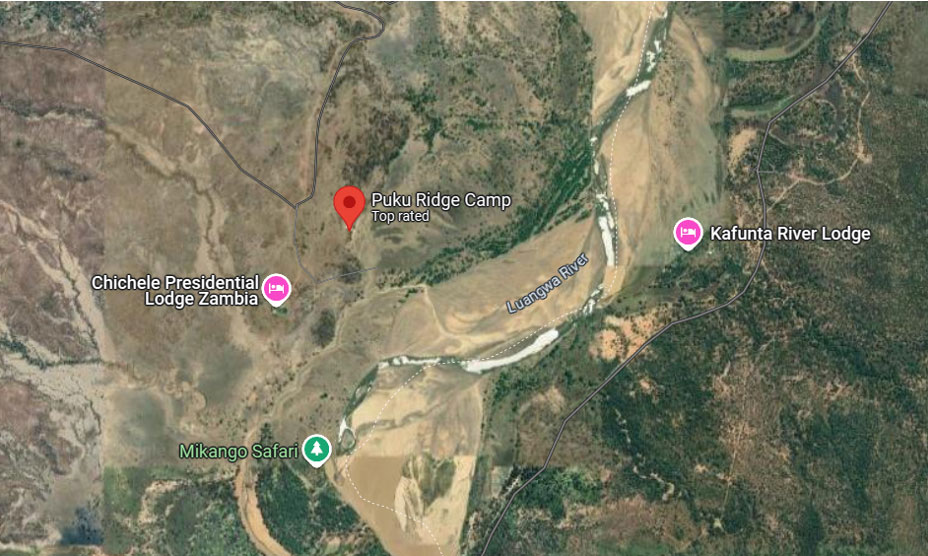
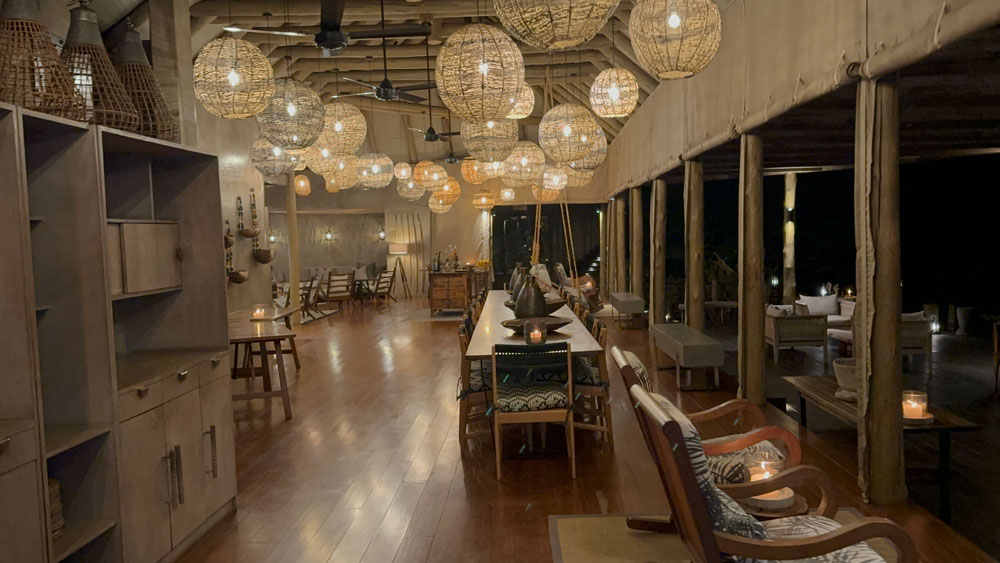
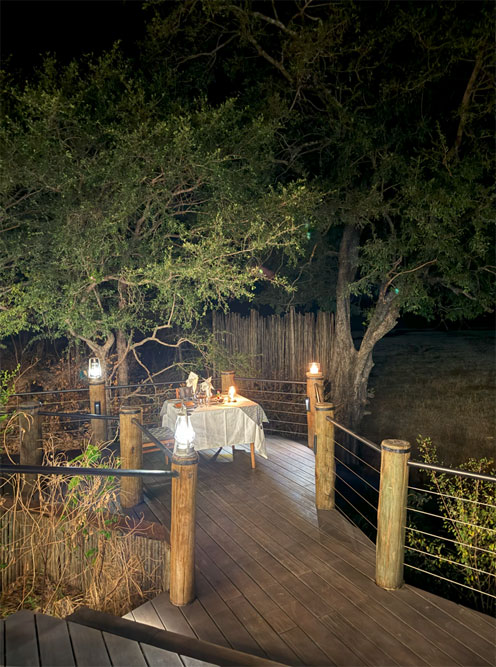
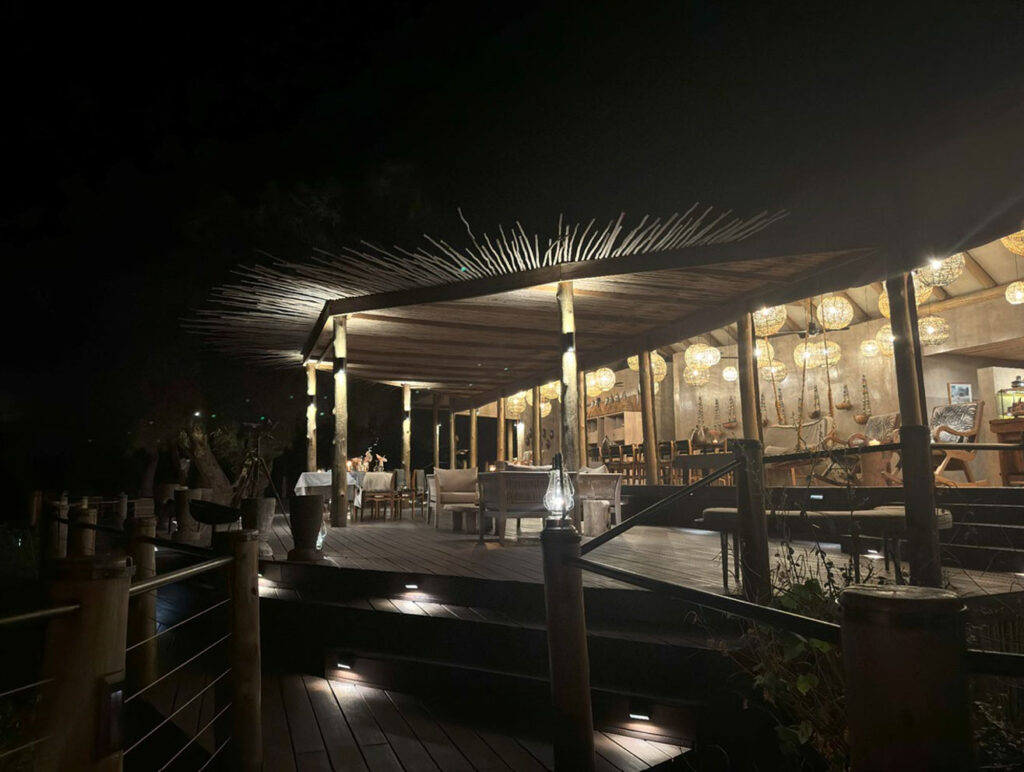
Puku Ridge certainly lives up to its reputation for luxury, with a thoughtfully designed camp layout, seamless arrival formalities, a stunning deck and common area, and beautifully appointed suites. Prior to our arrival, the management at Old Mondoro had arranged for us to be paired with one of the park’s top guides, Lams, though we weren’t aware of this until after being informed. Now, let’s begin with the camp layout and suites.
Puku Ridge features 8 luxury suites, each a combination of tents and walls, with a slightly larger layout compared to other camps. Each suite is spacious and includes a private plunge pool, with the added bonus of a sleep-out terrace. We were in Suite 1, which was located at the farthest end, and we enjoyed a leisurely 3-4 minute walk from our suite to the common area. The camp also has a hide located directly below the common area, overlooking a watering hole and the surrounding plains. However, it’s worth noting that the location does not offer river views.
While the camp itself is impressive, we were less enthused by the food, particularly in terms of variety, taste, and presentation. Given the large size of the lodge, it felt a bit more commercial compared to some other more intimate camps. The hide, while nice, didn’t stand out as much as those at other camps we’ve visited. Additionally, we found the staff to be trying a bit too hard to maintain the high level of luxury the lodge aims for, which came across as slightly artificial—though, to be fair, most of the staff were very friendly and welcoming.
On the positive side, Lams, our guide, is truly exceptional. He was paired with David, and together they provided us with some fantastic game sightings. One of the highlights was a full-day game drive suggested by Lams, which we gladly accepted. We traversed the northern boundaries of the park before returning to the lodge in time for sunset. It was a long but incredibly rewarding day, and we highly recommend both Lams and David for their expertise and enthusiasm.
Game Viewing @ Piku Ridge Camp
- puku-ridge-game-sighting-1
- puku-ridge-game-sighting-2
- puku-ridge-game-sighting-3
- puku-ridge-game-sighting-4
- puku-ridge-game-sighting-5
- puku-ridge-game-sighting-6
- puku-ridge-game-sighting-7
- puku-ridge-game-sighting-8
- puku-ridge-game-sighting-9
- puku-ridge-game-sighting-10
- puku-ridge-game-sighting-11
- puku-ridge-game-sighting-12
- puku-ridge-game-sighting-13
In conclusion, while Puku Ridge offers a luxurious experience, we’d be hard-pressed to recommend it over some of the other alternatives in the area. For those specifically seeking luxury, Puku Ridge certainly delivers, but for us, the overall experience didn’t quite stand out enough to warrant a return visit.
The Oberoi Mauritius
Upon returning to Johannesburg, we spent the night at the IHG hotel before heading back to the airport for our South African Airways flight to Mauritius, where we were looking forward to a beach escape. We chose The Oberoi, a prestigious brand known for its luxury and outstanding hospitality. We arranged all sightseeing tours and airport transfers through the hotel. While it comes at a slightly higher cost, the convenience of not having to arrange everything ourselves made it worthwhile.
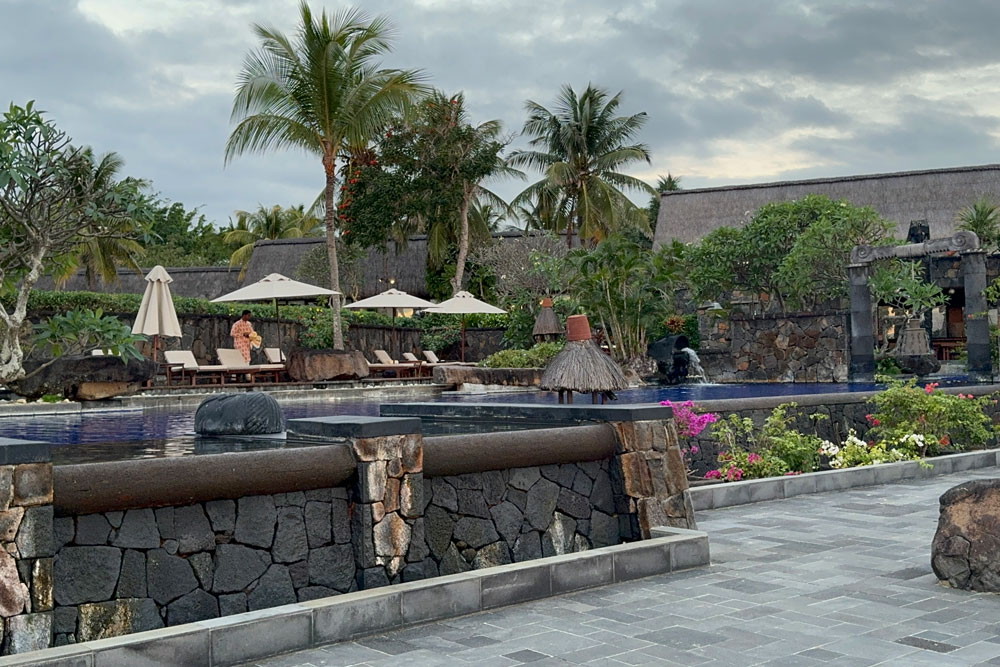
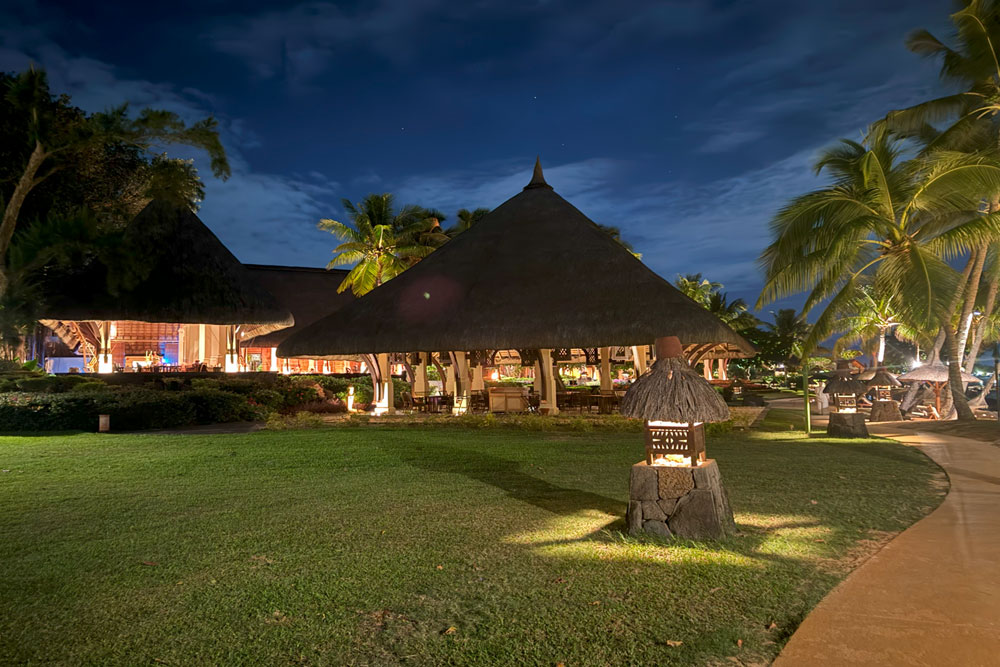
The arrival and transfer to the hotel were seamless. Located just north of the capital, Port Louis, the hotel is nestled in a lush, tropical woodland, enhancing its charming and enchanting atmosphere. While there are accessible beaches, most areas are rocky. The hotel’s layout, room design, and amenities, along with the onsite restaurant and diverse food options, met the high expectations set by a luxury property of this caliber—and they certainly delivered.
Experience @ The Oberoi Mauritius
We enjoyed a full-day Eastern Island tour, passing through picturesque towns and the Black River Gorges National Park, before ending the day with a stunning sunset at the beach near Souillac. Mauritius is an ideal beach destination for those traveling to Africa on safari, offering a wide range of accommodation options and activities. We highly recommend both Mauritius and The Oberoi for an unforgettable experience!
